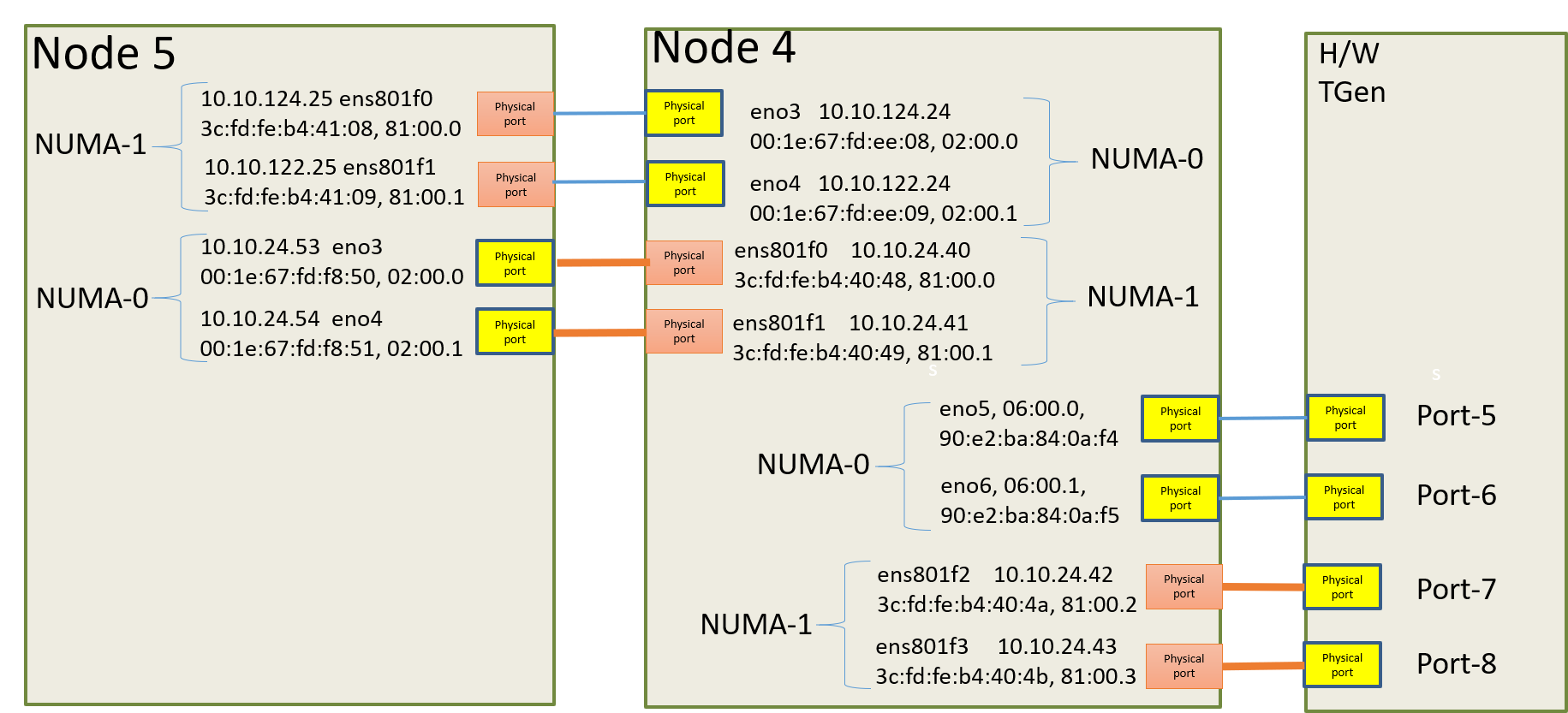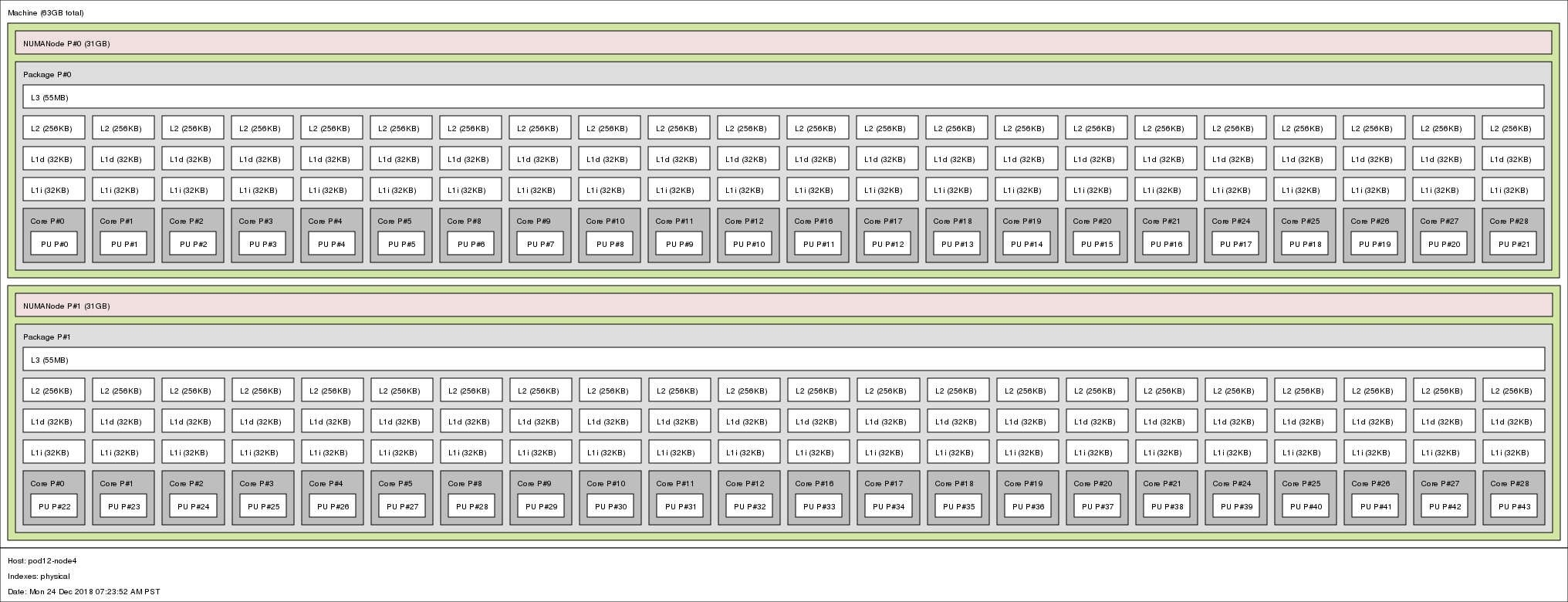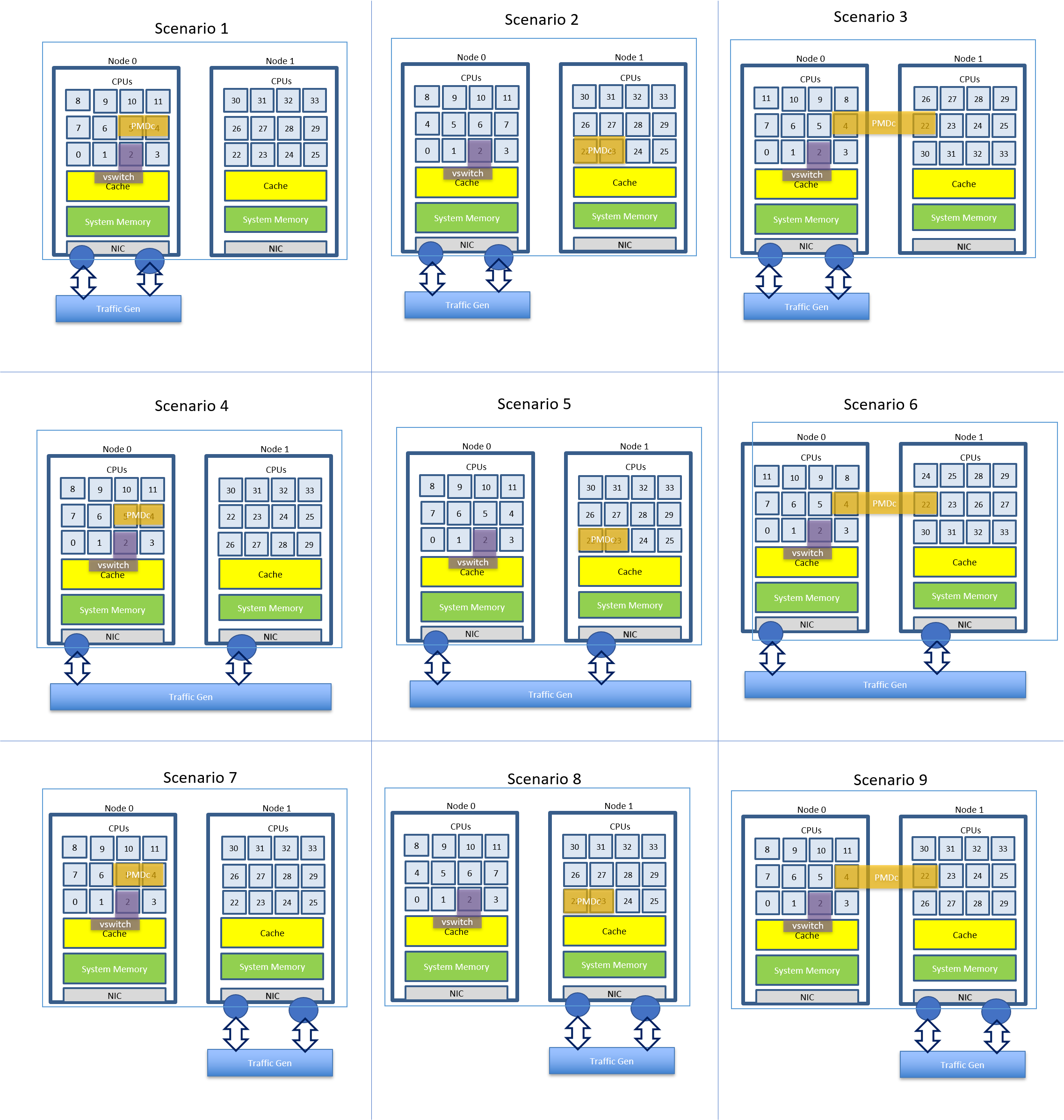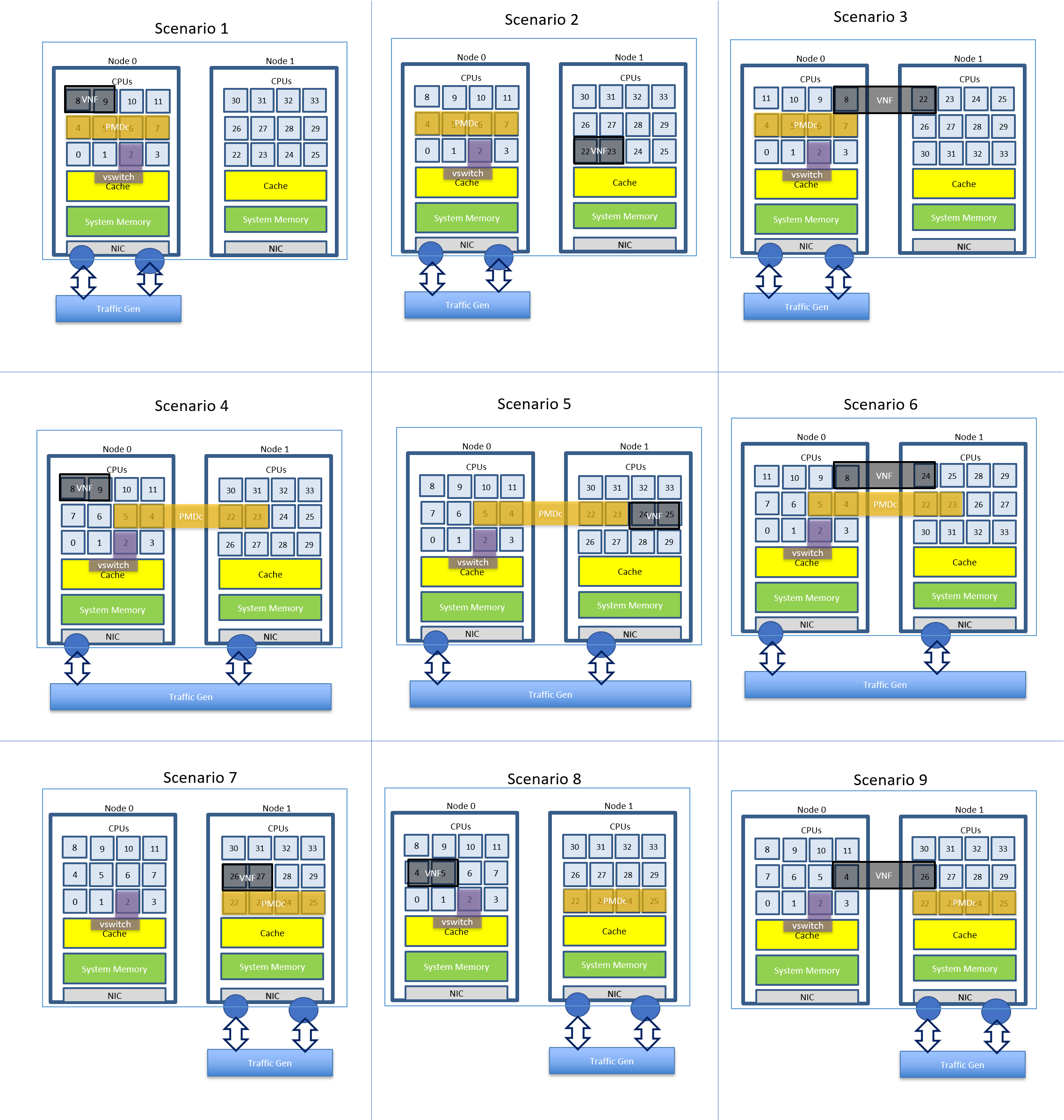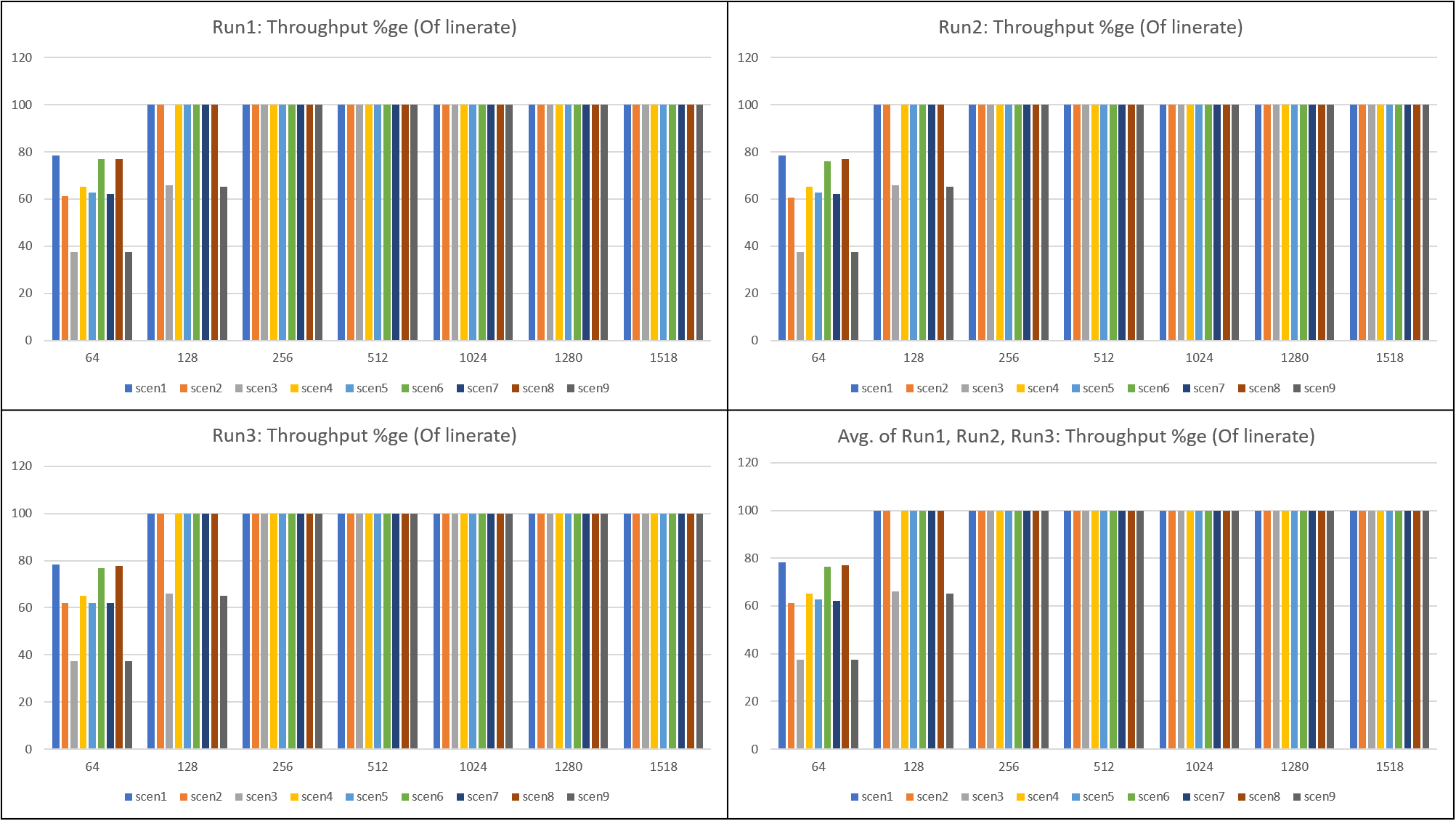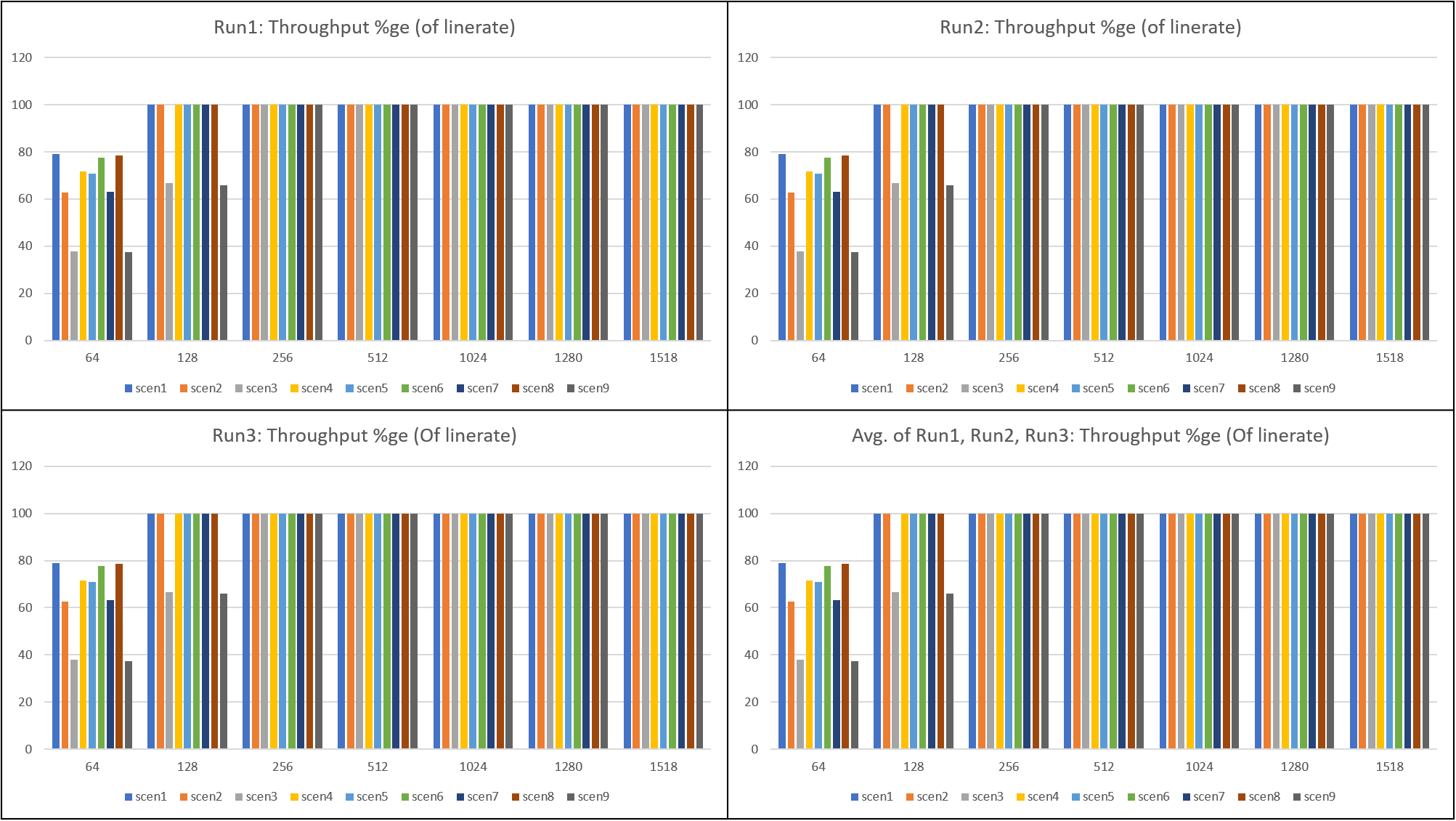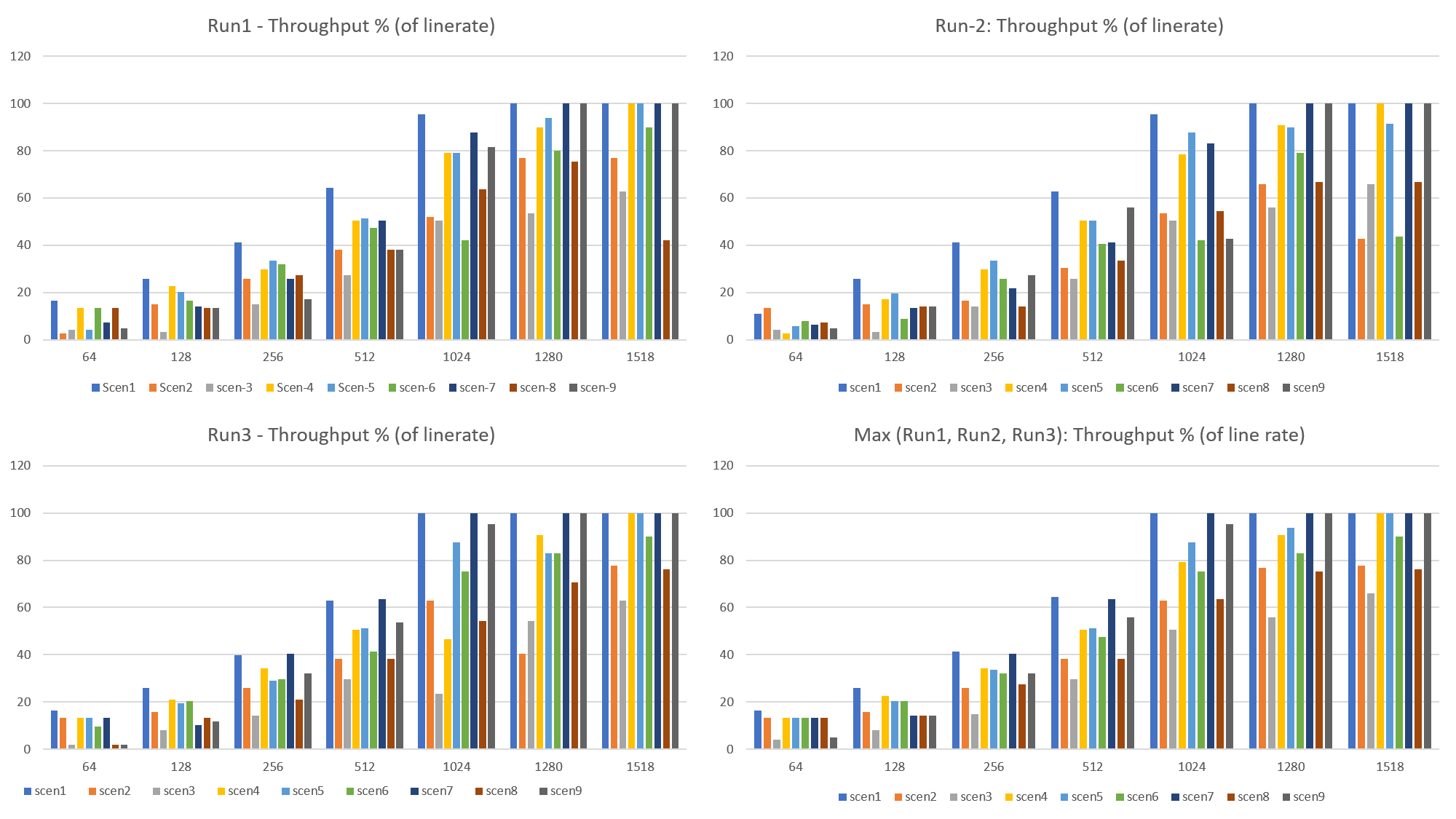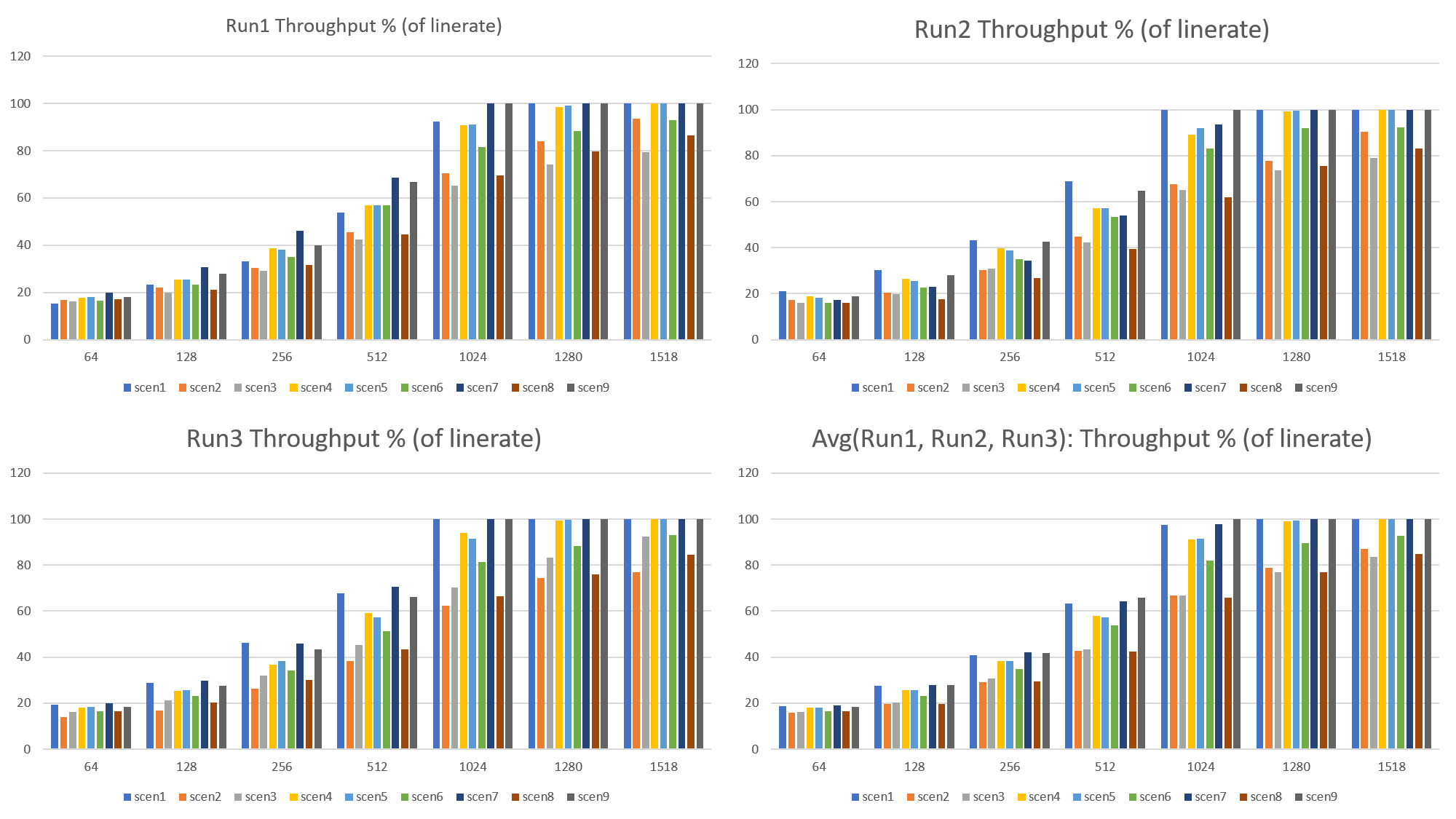Introduction:
Cross-NUMA tests as part of OPNFV Plugfest (Gambia) - January 2019..............
- VSPERF-Scenarios: P2P and PVP.
- Workloads: vSwitchd, PMDs and VNF.
- VNF: L2 Forwarding
- vswitch: OVS and VPP.
Testcases Run:
Framesizes: 64, 128, 256, 512, 1024, 1280, 1518
- RFC2544 Throughput Test - NDR.
- Continuous traffic Test - 100%
Testbed:
Node-4 (DUT), Node-5 (Software Traffic Generators) and H/W Traffic Generator.
CPU Topology on DUT
P2P Scenarios
Summary of P2P Scenarios:
| Scenario | Possible Core-allocations: | DUT Ports, TGen (Hardware) Ports |
|---|---|---|
| 1 | PMDs: 4, 5 (0x30) | DUT: eno5, eno6 TGEN: 5, 6 |
| 2 | PMDs: 22, 23 (0xC00000) | DUT: eno5, eno6 TGEN: 5, 6 |
| 3 | PMDs: 4, 22 (0x400010) | DUT: eno5, eno6 TGEN: 5, 6 |
| 4 | PMDs: 4, 5 (0x30) | DUT: eno5, ens801f2 TGEN: 5, 7 |
| 5 | PMDs: 22, 23 (0xC00000) | DUT: eno5, ens801f2 TGEN: 5, 7 |
| 6 | PMDs: 4, 22 (0x400010) | DUT: eno5, ens801f2 TGEN: 5, 7 |
| 7 | PMDs: 4, 5 (0x30) | DUT: ens801f2, ens802f3 TGEN: 7, 8 |
| 8 | PMDs: 22, 23 (0xC00000) | DUT: ens801f2, ens802f3 TGEN: 7, 8 |
| 9 | PMDs: 4, 22 (0x400010) | DUT: ens801f2, ens802f3 TGEN: 7, 8 |
PVP Scenarios
Summary of PVP Scenarios:
Scenario | Possible Core-allocations: Assumptions: Numa-0 (0-21) Numa-1 (22-43) vSwitch Core # : 02 | DUT Ports TGen Ports (Hardware) | |
1 | PMDs: 4, 5, 6, 7 (0xF0) | VNF: 8,9 | DUT: eno5, eno6 TGEN: 5, 6 |
2 | PMDs: 4, 5, 6, 7 (0xF0) | VNF: 22, 23 | DUT: eno5, eno6 TGEN: 5, 6 |
3 | PMDs: 4, 5, 6, 7 (0xF0) | VNF: 8, 22 | DUT: eno5, eno6 TGEN: 5, 6 |
4 | PMDs: 4,5,22,23 (0xC00030) | VNF: 8,9 | DUT: eno5, ens801f2 TGEN: 5, 7 |
5 | PMDs: 4,5, 22, 23 (0xC00030) | VNF: 24, 25 | DUT: eno5, ens801f2 TGEN: 5, 7 |
6 | PMDs: 4, 5, 22, 23 (0xC00030) | VNF: 8, 24 | DUT: eno5, ens801f2 TGEN: 5, 7 |
7 | PMDs: 22, 23, 24, 25 (0x3C00000) | VNF: 26, 27 | DUT: ens801f2, ens802f3 TGEN: 7, 8 |
8 | PMDs: 22, 23, 24, 24 (0x3C00000) | VNF: 4,5 | DUT: ens801f2, ens802f3 TGEN: 7, 8 |
9 | PMDs: 22, 23, 24, 25 (0x3C00000) | VNFs: 4,26 | DUT: ens801f2, ens802f3 TGEN: 7, 8 |
Results: P2P
RFC2544 Throughput Test Results
Continuous Throughput Test Results (Max Received Frame Rate at 100% of Line rate offered load)
Results: PVP
RFC2544 Throughput Test Results
Continuous Throughput Test Results (Max Received Frame Rate at 100% of Line rate offered load)
Inferences
Theme: What is expected, What is unexpected,
P2P:
- Only the smaller (64 and 128) packet sizes matter. For packets sizes above 128 the throughput performance remains similar.
- Scenarios 2 and 7 can be seen as the worst case scenarios with both the PMDs running on different NUMA than the NIC. As expected, the performance is consistently low for both scenarios-2 and 7.
- Interesting cases are Scenario-3 and Scenario-9. Here a single pmd ends up serving both the NICs. This results in poorer performance than Scenario-2 and 7.
- Scenario 1, 6, and 8 can be seen as good cases where each of the NICs are served by single, separate PMDs.
PVP:
In these scenarios, we ensure there is always at least 1 PMD mapped to a NUMA to which a physical NIC is mapped to.
Generic:
Possible Variations
- Increase the Number of CPUs to 4 for the VNF.
- Phy2phy case (no VNF).
- Try different forwarding VNF
- Different Virtual Switch (VPP)
- RxQ Affinity.
Notes on Documentation
- must view log files, qemu threads need to match the intended scenario for VM -
- Christian created qemu command (and documentation) - check this for VM mapping
- SR: CT's command is only the host
- qemu command line -smp 2 should do this - simulates two Numa Nodes - need to see how the VM see it's architecture: numactl -h
